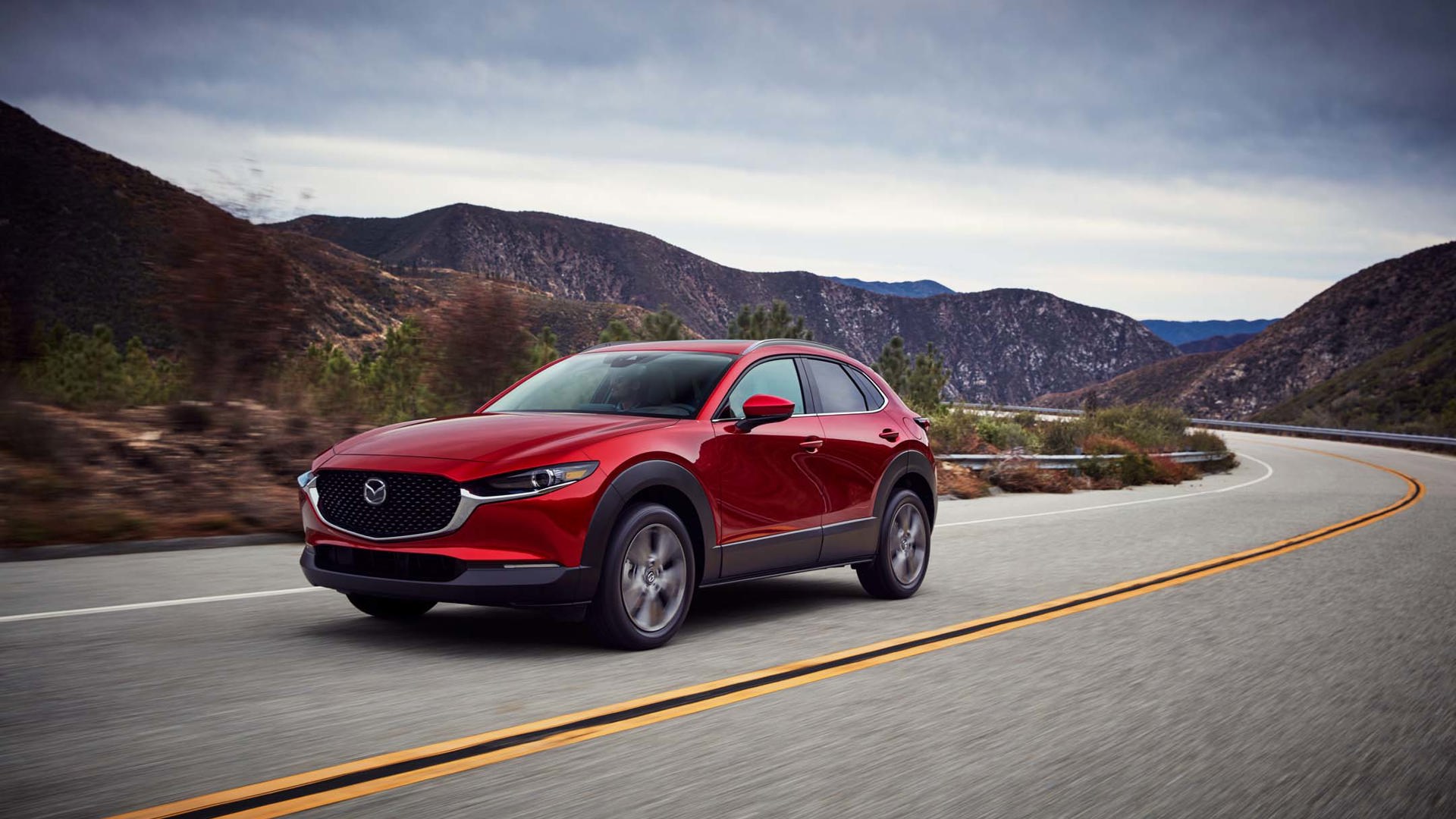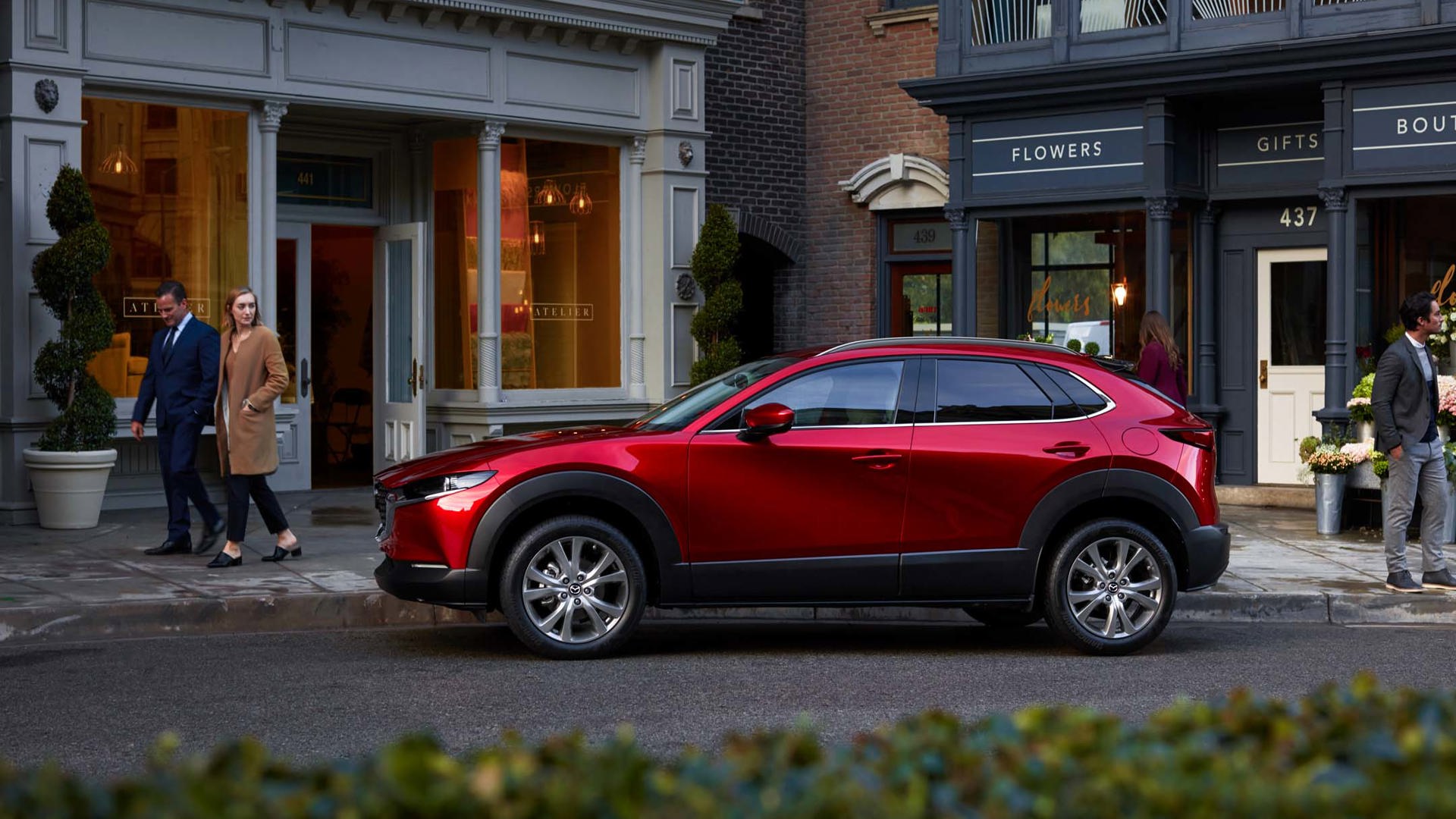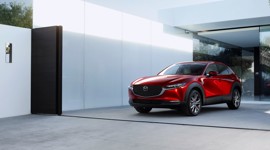The Mazda CX-30 is the second vehicle to sport the Japanese automaker’s latest design language and while it looks similar to the Mazda3, its styling couldn’t be more different.
“The Kodo design is always evolving,” says Mazda designer Ryo Yanagisawa. “The difference from the last generation is our ‘less-is-more’ approach, which we think will purify the design.”
Yanagisawa-san makes it clear that Mazda isn’t jumping on the trend of minimalism, and points out that the design team is focussing on the interplay of light and shadow.
You’ve probably already witnessed this on the unusually smooth-bodied Mazda3. Despite the lack of design lines, the paint finish seems to reflect light in a unique way. This is especially noticeable in the brand’s flagship paint finish Soul Red Crystal, in addition to other extra-cost finishes like Machine Grey Metallic. Looking at the Mazda3, the paint makes the reflections create a line that flows from the nose of the car, over the front wheel, and then into the rear wheel. “In the 3, the reflections and lines express sportiness; the lines are closer to the wheels,” says Yanagisawa-san.


But in the CX-30, the lines caused by the reflections seem to go in the completely opposite directions. “It radiates from the front fender, and spreads to multiple points,” he says. Specifically, it radiates over to the rear fenders and roof line, stretching the shadows to make the CX-30 appear larger. This is much more noticeable when looking at the profiles of the two cars, and once you see it, you can’t unsee it. In the side-profile view of the Mazda3, you’ll see the reflections creating a backwards C shape, while in the CX-30, you’ll see more of a S shape.
One more point to consider with the CX-30 is the aggressive use of body cladding around the vehicle. It has considerably thicker body cladding around the fenders and door sills than the other Mazda crossovers. While it’s starting to feel cliché to have black body cladding on every crossover, Yanagisawa-san says that they provide a stylish function of essentially blacking out the bottom half of the vehicle, leaving all the painted upper half of the body to look sleek and sporty while the bottom half looks rugged and more SUV-like: “It would look chubby without the body cladding – it is there to change the looks and proportions of the vehicle.”
One last question I had about the vehicle’s design: the wheels. Mazda offers the CX-30 with 16- or 18-inch wheels, but the wheel wells still look a bit bare, especially in the rear. I asked if Mazda will offer bigger wheels on the CX-30 to help fill out that awkwardness, and the designer sympathized, saying he’d love to have bigger wheels, but it’s not as easy as it sounds. “Bigger wheels can mean worse performance,” he said. That’s something that just won’t fly at Mazda, a brand that emphasizes the joy of driving its vehicles.









